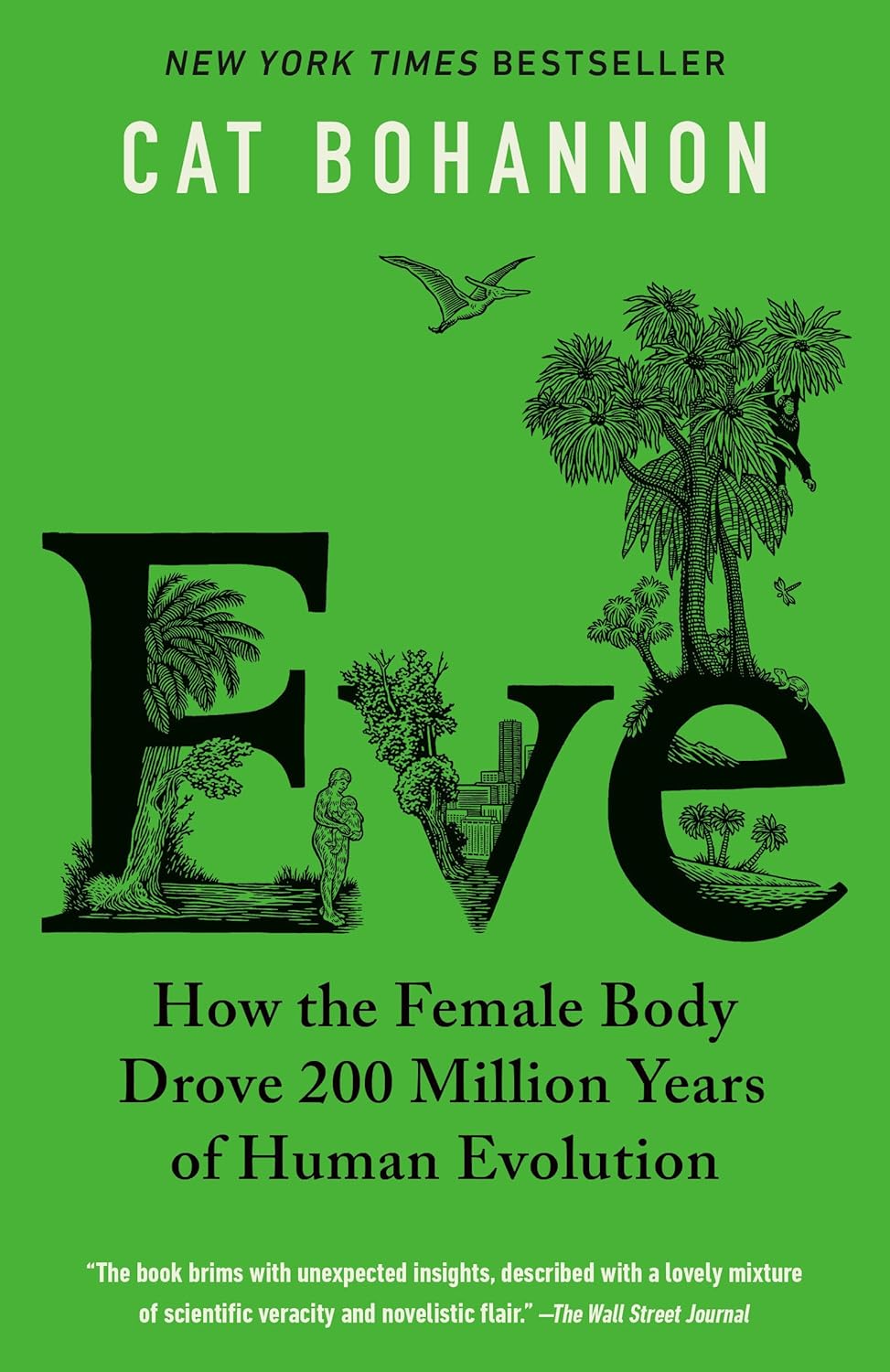Summary | Excerpt | Reading Guide | Reviews | Beyond the Book | Readalikes | Genres & Themes | Author Bio

How the Female Body Drove 200 Million Years of Human Evolution
by Cat Bohannon
And as far as the latest scientific research can determine, we make milk because we used to lay eggs and, weirdly, because we have a long-standing love affair with millions of bacteria. Both can
be traced back to Morgie.
WHICH CAME FIRST, THE CHICKEN OR THE EGG ...
Jurassic beasts tramped above Morgie's burrow every day. Meat eaters as big as lorries ran around like ostriches on steroids. Some, in fact, looked like ostriches on steroids. Loch Ness– style plesiosaurs lived in the seas. With all the big niches in the ecosystem
taken, most of our early Eves evolved underfoot, which is hardly the place you wanted to be 200 million years ago. Even the earth was dangerous: the supercontinent, Pangaea, was starting to break up. Tectonic shifts tore Morgie's world apart. Water rushed in to fill the widening gaps, birthing new oceans with the hiss of lava hitting water.
Still, Morgie was an incredibly successful species. Her fossils have been found everywhere from South Wales to South China. Where there could be a Morgie, it seems, there was. She was
adaptable. Resourceful. And she had a lot of kids. The geneticist J. B. S. Haldane* liked to say that God had an inordinate fondness for beetles, for he made so many of them; eating them was a successful strategy for insectivores like Morgie. For God so loved the beetles, and the furry, warm, heart-fluttering Eves who ate them.
But it wasn't just the surfeit of beetles that made Morgie so successful. Unlike the Eves who came before her, Morgie nursed her young. Once they are born, newborn animals face four essential dangers: desiccation, predation, starvation, and disease. They can die of
thirst. Something can eat them. They can starve to death. And if they manage to dodge all of those, they can still die from bacteria or parasites overwhelming their immune systems. Every mother in the animal world has evolved strategies to try to protect her offspring, but Morgie managed to combat all four by dousing her kids in stuff made of her own body.
When we talk about breast milk, we usually describe it as a baby's first food. The last thing you want to do is underfeed a baby, because a newborn needs fuel to build new fat and blood and bone and tissue. As a result, we usually assume newborns cry for milk because they're hungry, but that is and isn't true. The most important thing infants need after they are born is water. All living creatures, mammal or not, are mostly made of water.
While the adult human body is 65 percent water, newborns are 75 percent. Most animals are essentially lumpy donuts filled with ocean. If you wanted to describe life on Earth in the simplest terms, you could say we're energetic bags of highly regulated water.
We use that water to transport molecules between cells, between organs, to splice molecules and build new ones, to fold proteins, to cushion our various lumps, to move nutrients and waste in the right directions. Our very DNA maintains its shape surrounded by carefully ordered molecules of water. An adult human can go without food for up to a month, but without water we die in three to four days. Any biologist will tell you that the
story of life is really the story of water. Our earthly cells evolved in shallow oceans, and they never got over it.
So newborn Earth animals need water as soon as possible. Fish drink constantly from the second they hatch. On land, slaking a newborn's thirst is trickier. Some newborn reptiles are small enough that they can drink water droplets and absorb mist
*If you've ever heard of a "clone," that was Haldane. He was also the first person to compose a scientific paper in a forward trench—specifically in France during World War I. One of his co-authors, sadly, was killed in battle, so Haldane apologetically submitted for publication early, given the man's inability to collaborate further (Subramanian, 2020).
Excerpted from Eve by Cat Bohannon. Copyright © 2023 by Cat Bohannon. Excerpted by permission of Knopf. All rights reserved. No part of this excerpt may be reproduced or reprinted without permission in writing from the publisher.
Your guide toexceptional books
BookBrowse seeks out and recommends the best in contemporary fiction and nonfiction—books that not only engage and entertain but also deepen our understanding of ourselves and the world around us.